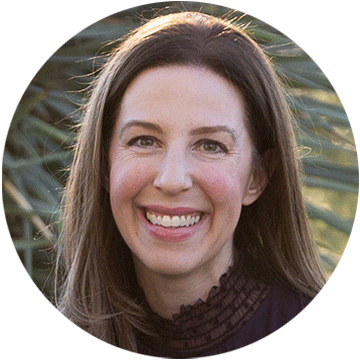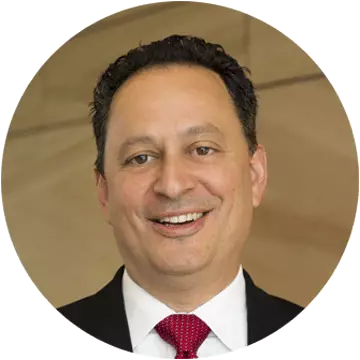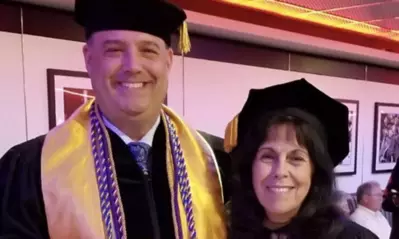Is the death of the university upon us?

Written by Elizabeth Exline

Like the villain in a movie, COVID can be blamed for all sorts of bad things. The tiresome phrase “new normal?” Check. Supply-chain issues? Check. Declining postsecondary enrollment? Not so fast.
While it’s true that spring 2022 heralded yet another decline in postsecondary enrollment , the charge can’t necessarily be laid at COVID’s door. At least not entirely. In fact, that enrollment continues to drop even as the pandemic fades in the rearview mirror suggests COVID isn’t completely at fault.
So, what gives? As University of Phoenix Provost John Woods explains, “Enrollment cliffs have been discussed for some time. It [just] hit a couple years early and, perhaps, was accelerated by the pandemic.”
The reasons behind today’s cliff are both objective and subjective. More importantly, however, they point to what higher education institutions need to do to ensure a successful future.
What is an enrollment cliff?
If you haven’t heard the term “enrollment cliff” or “demographic cliff,” don’t beat yourself up. It’s one bandied about in circles of college presidents and only occasionally makes it into headlines. Until recently that is.
Essentially, the term refers to a sudden drop in, you guessed it, college enrollment. Experts were predicting a cliff to hit in 2025 because the birthrate declined sharply in 2008. Recessions will do that. Another cliff is predicted for 2037.
But the fact that college enrollments nose-dived in 2021 and are continuing to fall? That, Woods says, can be chalked up to a perfect storm of factors, including smaller graduating high school classes and the pandemic, the latter promising uncertain college experiences the first year (online? In person?) and an uncertain economy two years later.
By the numbers: college enrollment decline
Interestingly, while some sectors plummeted off that enrollment cliff, others seemed to enjoy more of a parachuted experience.
Postsecondary enrollment dropped 3.5% in spring 2021 and 4.1% in spring 2022, according to the National Student Clearinghouse Research Center . Most of that happened within the undergraduate sector, which is now slimmed down by nearly 1.4 million students compared to pre-pandemic numbers.
But the best stories are full of twists and turns, and this one is no exception. Graduate school enrollment, for example, increased 4.6% in 2021 and has decreased only 0.8% so far in 2022.
Then there’s the way the decline has shaken out among institutions. Take a look at the enrollment declines across education sectors from highest to lowest:
- Public two-year colleges declined 7.8%
- Public four-year colleges declined 3.4%
- Private, non-profit, four-year colleges declined 1.7%
- Private, for-profit, four-year colleges declined 0.2%
Making sense of the drop in postsecondary enrollment
Understanding why the enrollment decline has hit public four-year institutions and community colleges hardest can potentially pull back the curtain on how universities need to adapt.
Are degrees worth the investment?
For many, the connection between salary and education is inextricable. And the data has historically supported that link: As recently as May 2022, the U.S. Bureau of Labor Statistics (BLS) has tied higher wages and lower unemployment to higher education .
Dig around on the BLS website, though, and you’ll find another post about fast-growing jobs “that pay well and don’t require a college degree.” And this points to a fact that everyone seems to be dancing around: As with many other public institutions, people seem to be losing confidence in traditional universities and colleges.
Georgetown University Center on Education and the Workforce underscored this tenuousness with its 2022 report “Ranking 4,500 Colleges by ROI .” The report examined earnings of people who earned a high school diploma as their highest level of education as compared to those who earned college and graduate degrees. The shocking result? This study found that more than half of students at 30% of the study’s postsecondary institutions earned less than high school graduates 10 years after enrollment.
Before you throw in the towel on your postsecondary school dreams, however, Woods offers this insight: “I think that data point is certainly interesting, but the other side of that coin is that people with degrees earn significantly more on average. … You do bump up against some limitations without higher education. You might do well straight out of high school, but you might also hit a ceiling after 10 years.”
Woods is on to something. Remember that BLS report about fast-growing jobs that don’t require a college degree? They are in categories like construction and installation; transportation; and maintenance and repair, where BLS reports their salary ranges.
How to avoid the enrollment cliff
If salaries are not guaranteed but still statistically higher for people who pursue higher education, then reasons for declining enrollment must lie elsewhere. And Woods thinks one key factor is in the transaction between student and institution. Students must have confidence that their degree will not only be worth their investment of time and money, but that they themselves will be supported and accommodated. And this boils down to the twin virtues of innovation and value.

“We did pretty well with enrollment,” Woods says of University of Phoenix. “Our retention held; we did not drastically decline. And in the last year we’ve started to moderately grow. What do you say about all that? We supported our students. When they reported [the impact from the pandemic], we provided accommodations and supported them as well as we could, and we encouraged our faculty to show compassion. As a result, we showed well on our retention numbers.”
Online universities like University of Phoenix also had the advantage of already knowing how to efficiently and effectively operate in an online format. And while all universities took their own path forward, University of Phoenix has learned from what has worked and expanded from there. Innovation, after all, never rests on its laurels.
Competency-based degree programs , for example, have rolled out to students looking for both flexibility and affordability in education.
And skills-mapping is the latest endeavor designed to benefit students. By fall 2022, 90% of enrollable programs will have skills mapped to them at University of Phoenix. As students progress through a given program, they will not only know which skills they’ve mastered, but they’ll be able to share digital badges that contain data of how each skill was mastered. “I think that’s going to be a game changer,” Woods says.
A case for the future
The other variable in this picture is the economy. While economic indicators are mixed, the possibility of a recession has made a lot of people rethink their next career move.
The new economic reality has also “put pressure on higher education,” Woods notes. In response, the University continues to honor the tuition rates it rolled back four years ago, with no plans to raise them in the immediate future.
“We’ve found ways to become more efficient with automation and updating tech,” Woods explains. “We’ve found ways to reduce our cost structure while serving the same number of students.”
Innovation, in other words, has once again underpinned University of Phoenix’s approach. This is good news for students.
“Higher education is still worth the investment when it is affordable and flexible, and it’s a product that allows you to communicate what you’ve learned incrementally over time in a way that makes sense to your employer,” Woods says.
Woods believes University of Phoenix is a leader in these areas. He also notes that other universities are moving in this direction, which in the end should better prepare students for their post-graduation careers.

ABOUT THE AUTHOR
Elizabeth Exline has been telling stories ever since she won a writing contest in third grade. She's covered design and architecture, travel, lifestyle content and a host of other topics for national, regional, local and brand publications. Additionally, she's worked in content development for Marriott International and manuscript development for a variety of authors.
This article has been vetted by University of Phoenix's editorial advisory committee.
Read more about our editorial process.
Read more articles like this:


